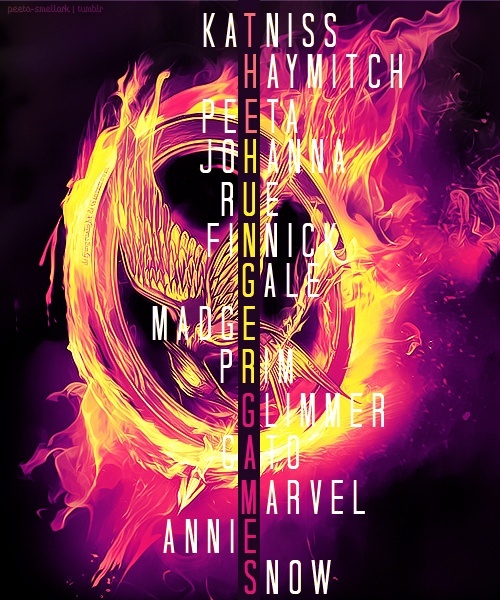Camera angles and movements combine to create a sequence of images, just as words, word order and punctuation combine to make the meaning of a sentence. You need a straightforward set of key terms to describe them. Describing Shots When describing camera angles, or creating them yourself, you have to think about three important factors — The FRAMING or the LENGTH of shot — The ANGLE of the shot — If there is any MOVEMENT involved When describing different cinematic shots, different terms are used to indicate the amount of subject matter contained within a frame, how far away the camera is from the subject, and the perspective of the viewer. Each different shot has a different purpose and effect. A change between two different shots is called a CUT. Framing or Shot Length 1 . Extreme long shot This can be taken from as much as a quarter of a mile away, and is generally used as a scene-setting, establishing shot. It normally shows an EXTERIOR, eg the outside of a building, or a landscape, and is often used to show scenes of thrilling action eg in a war film or disaster movie. There will be very little detail visible in the shot, it’s meant to give a general impression rather than specific information. The extreme long shot on the left is taken from a distance, but denotes a precise location – it might even connote all of the entertainment industry if used as the opening shot in a news story. 2. Long Shot This is the most difficult to categorise precisely, but is generally one which shows the image as approximately “life” size ie corresponding to the real distance between the audience and the screen in a cinema (the figure of a man would appear as six feet tall). This category includes the FULL SHOT showing the entire human body, with the head near the top of the frame and the feet near the bottom. While the focus is on characters, plenty of background detail still emerges: we can tell the coffins on the right are in a Western-style setting, for instance. 3. Medium Shot Contains a figure from the knees/waist up and is normally used for dialogue scenes, or to show some detail of action. Variations on this include the TWO SHOT (containing two figures from the waist up) and the THREE SHOT (contains 3 figures…). NB. Any more than three figures and the shot tends to become a long shot. Background detail is minimal, probably because location has been established earlier in the scene – the audience already know where they are and now want to focus on dialogue and character interation. Another variation in this category is the OVER-THE-SHOULDER-SHOT, which positions the camera behind one figure, revealing the other figure, and part of the first figure’s back, head and shoulder. 4. Close-Up This shows very little background, and concentrates on either a face, or a specific detail of mise en scène. Everything else is just a blur in the background. This shot magnifies the object (think of how big it looks on a cinema screen) and shows the importance of things, be it words written on paper, or the expression on someone’s face. The close-up takes us into the mind of a character. In reality, we only let people that we really trust get THAT close to our face – mothers, children and lovers, usually – so a close up of a face is a very intimate shot. A film-maker may use this to make us feel extra comfortable or extremely uncomfortable about a character, and usually uses a zoom lens in order to get the required framing. 5. Extreme Close-Up As its name suggests, an extreme version of the close up, generally magnifying beyond what the human eye would experience in reality. An extreme close-up of a face, for instance, would show only the mouth or eyes, with no background detail whatsoever. This is a very artificial shot, and can be used for dramatic effect. The tight focus required means that extra care must be taken when setting up and lighting the shot – the slightest camera shake or error in focal length is very noticeable. Camera Angles The relationship between the camera and the object being photographed (ie the ANGLE) gives emotional information to an audience, and guides their judgment about the character or object in shot. The more extreme the angle (ie the further away it is from eye left), the more symbolic and heavily-loaded the shot. 1. The Bird’s-Eye view This shows a scene from directly overhead, a very unnatural and strange angle. Familiar objects viewed from this angle might seem totally unrecognisable at first (umbrellas in a crowd, dancers’ legs). This shot does, however, put the audience in a godlike position, looking down on the action. People can be made to look insignificant, ant-like, part of a wider scheme of things. Hitchcock (and his admirers, like Brian de Palma) is fond of this style of shot. A cameraman, raised above the action, gets a high angle shot 2. High Angle Not so extreme as a bird’s eye view. The camera is elevated above the action using a crane to give a general overview. High angles make the object photographed seem smaller, and less significant (or scary). The object or character often gets swallowed up by their setting – they become part of a wider picture. 3. Eye Level A fairly neutral shot; the camera is positioned as though it is a human actually observing a scene, so that eg actors’ heads are on a level with the focus. The camera will be placed approximately five to six feet from the ground. 4. Low Angle These increase height (useful for short actors like Tom Cruise or James McAvoy) and give a sense of speeded motion. Low angles help give a sense of confusion to a viewer, of powerlessness within the action of a scene. The background of a low angle shot will tend to be just sky or ceiling, the lack of detail about the setting adding to the disorientation of the viewer. The added height of the object may make it inspire fear and insecurity in the viewer, who is psychologically dominated by the figure on the screen. 5. Oblique/Canted Angle Sometimes the camera is tilted (ie is not placed horizontal to floor level), to suggest imbalance, transition and instability (very popular in horror movies). This technique is used to suggest POINT-OF-View shots (ie when the camera becomes the ‘eyes’ of one particular character,seeing what they see — a hand held camera is often used for this. Camera Movement A director may choose to move action along by telling the story as a series of cuts, going from one shot to another, or they may decide to move the camera with the action. Moving the camera often takes a great deal of time, and makes the action seem slower, as it takes several second for a moving camera shot to be effective, when the same information may be placed on screen in a series of fast cuts. Not only must the style of movement be chosen, but the method of actually moving the camera must be selected too. There are seven basic methods: 1. Pans A movement which scans a scene horizontally. The camera is placed on a tripod, which operates as a stationary axis point as the camera is turned, often to follow a moving object which is kept in the middle of the frame. 2. Tilts A movement which scans a scene vertically, otherwise similar to a pan. 3. Dolly Shots Sometimes called TRUCKING or TRACKING shots. The camera is placed on a moving vehicle and moves alongside the action, generally following a moving figure or object. Complicated dolly shots will involve a track being laid on set for the camera to follow, hence the name. The camera might be mounted on a car, a plane, or even a shopping trolley (good method for independent film-makers looking to save a few dollars). A dolly shot may be a good way of portraying movement, the journey of a character for instance, or for moving from a long shot to a close-up, gradually focusing the audience on a particular object or character. 4. Hand-held shots The hand-held movie camera first saw widespread use during World War II, when news reporters took their windup Arriflexes and Eyemos into the heat of battle, producing some of the most arresting footage of the twentieth century. After the war, it took a while for commercially produced movies to catch up, and documentary makers led the way, demanding the production of smaller, lighter cameras that could be moved in and out of a scene with speed, producing a “fly-on-the-wall” effect.This aesthetic took a while to catch on with mainstream Hollywood, as it gives a jerky, ragged effect, totally at odds with the organised smoothness of a dolly shot. The Steadicam (a heavy contraption which is attached a camera to an operator by a harness. The camera is stabilized so it moves independently) was debuted in Marathon Man (1976), bringing a new smoothness to hand held camera movement and has been used to great effect in movies and TV shows ever since. No “walk and talk” sequence would be complete without one. Hand held cameras denote a certain kind of gritty realism, and they can make the audience feel as though they are part of a scene, rather than viewing it from a detached, frozen position. A crane in use, following the path of a balloon floating into the sky 5. Crane Shots Basically, dolly-shots-in-the-air. A crane (or jib), is a large, heavy piece of equipment, but is a useful way of moving a camera – it can move up, down, left, right, swooping in on action or moving diagonally out of it. The camera operator and camera are counter-balanced by a heavy weight, and trust their safety to a skilled crane/jib operator. 6. Zoom Lenses A zoom lens contains a mechanism that changes the magnification of an image. On a still camera, this means that the photographer can get a ‘close up’ shot while still being some distance from the subject. A video zoom lens can change the position of the audience, either very quickly (a smash zoom) or slowly, without moving the camera an inch, thus saving a lot of time and trouble. The drawbacks to zoom use include the fact that while a dolly shot involves a steady movement similar to the focusing change in the human eye, the zoom lens tends to be jerky (unless used very slowly) and to distort an image, making objects appear closer together than they really are. Zoom lenses are also drastically over-used by many directors (including those holding palmcorders), who try to give the impression of movement and excitement in a scene where it does not exist. Use with caution – and a tripod! 7. The Aerial Shot An exciting variation of a crane shot, usually taken from a helicopter. This is often used at the beginning of a film, in order to establish setting and movement. A helicopter is like a particularly flexible sort of crane – it can go anywhere, keep up with anything, move in and out of a scene, and convey real drama and exhilaration — so long as you don’t need to get too close to your actors or use location sound with the shots.


